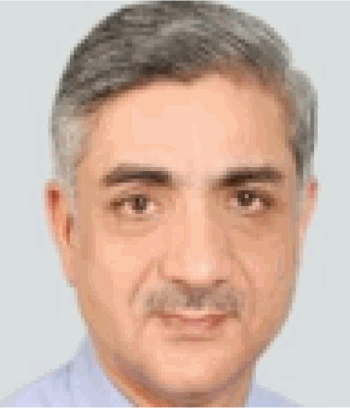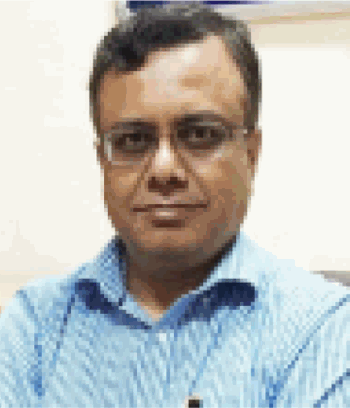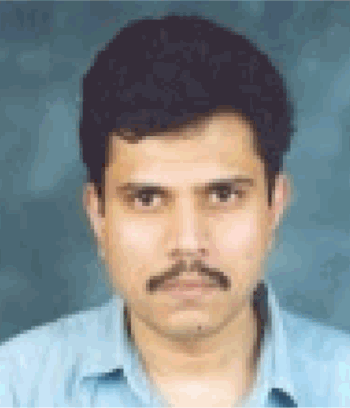The August 2023 issue of the IETE Journal of Research (Volume 69, Number 8) contains 70 articles. These articles discuss ongoing research and recent advancements in the fields of biomedical engineering, computer science, power electronics, control systems, electronic circuits, electro-magnetics, and communications.
The number of articles on biomedical engineering in this issue is seventeen, in the order of the subject areas listed above. Congestive heart failure detection, the creation of a respiratory-based biometric system using electromyography signals, an adaptive filtering method for analysing ECG data, the detection of glaucoma using fundus imaging, research on pulse propagation in biological tissues, the classification of breast cancer images, deep brain stimulator coding methods, the anticancer properties of neem leaves, dental image segmentation and classification, down syndrome analysis, and lower limb amyloidosis are just a few examples. Wavelet bispectrum techniques for the detection of accidental lung sounds, key authentication and privacy protection for secure healthcare, robotic rehabilitation device development, pulmonary nodule detection, improved healthcare system management, and brain tumour detection using magnetic resonance imaging are just a few more examples.
Ten articles in the general area of computer science are included in this issue. The work presented here focuses on developing methods for integrating demographic and diagnostic codes, vehicle detection in UAV images, modified BLEU score for morphologically rich languages, homomorphic encryption for cloud security, IOT for monitoring smart field data, human activity recognition using smartphone accelerometer sensors, link quality estimation in vehicular networks, software requirement prioritization, intelligent edge computing, and big data, and integrated transfer learning methods for image recognition.
This issue comprises sixteen power electronics-related research articles. The reported work focuses on power flow management in smart grid, PI controllers for non-ideal quadruple boost controller, energy source planning for real-world deregulated electric utilities, optimal placement of electrical vehicle charging stations, transfer capability calculation using opposition herd optimizer, algorithms to coordinate multiple load shedding in microgrids, grid-tied PV hybrid energy storage system control, and power congestion management technique of electric power meters, precise clock management technology of electric power meter, averting failures in circuit breakers, two-axis solar tracking system evaluation, load frequency control of interconnected power system in smart grid, application of artificial bee colony algorithm in virtual power plant planning, converter topology assessment for switched reluctance motor drives, eddy current modeling for through silicon cylindrical vias and micro phasor measurements in grid connected distribution system.
There are also six articles in this number that cover different parts of control engineering. These articles present research on an array of topics, such as Particle Swarm Optimization for mining rules, tuning ranges for PID controller design in MIMO systems, vision-based autonomous quadcopter landing, feedback control approach for active suspension, robust sliding mode control for quadcopter UAVs and driver smoking behaviour detection using featured pyramid networks.
Eight articles in this issue deal with electrical circuits. There is an assortment of topics covered in these articles, from notch filters based on coplanar waveguides to full adders based on carbon nanotube field effect transistors to hydrothermally grown ZNO nanorods for vibration sensing to bit truncation-based motion estimation to nanowire transistors to bandpass filters for ultra-wideband networks to the DC and short channel performance of SOI FinFETs to the reconfigurability of frequency bands with digitally controlled oscillators.
Eleven articles in this issue cover the expansive topic of electromagnetics. The research on omnidirectional antenna systems employing cavity models, MIMO antennas for 5G mobile handsets, Ku-band antennas with circular polarization, slotted hexagonal MIMO antenna structure for 5G applications, UWB MIMO monopole antenna with band notch at 5.5 GHz, slot antenna miniaturization techniques, monopole antenna development for Bluetooth, WIMAX, and WLAN applications, monopole antenna with wide axial ratio, and the use of marble to suppress electromagnetism, 5G dual band MIMO loop antenna system and designing of low-cost mobile antenna are reported.
In addition, two communications papers are included in this issue. These articles extend the study of disc diffusion testing for networked communication and fuzzy statistical protocols.
I hope that the researchers will find these topics useful and will put the research findings to good use.
Additional information
Notes on contributors

Shiban K. Koul
Editor-in-Chief Shiban K Koul is currently an emeritus professor at the Indian Institute of Technology, Delhi. He served as deputy director (Strategy and Planning) at IIT Delhi from 2012 to 2016 and mentor deputy director (Strategy & Planning, International Affairs) at IIT Jammu from 2018 to 2021. He also served as the chairman of Astra Microwave Products Limited, Hyderabad from 2009 to 2019 and Dr R P Shenoy Astra Microwave chair professor at IIT Delhi from 2014 to 2019. His research interests include RF MEMS, high frequency wireless communication, microwave engineering, microwave passive and active circuits, device modelling, millimetre and sub-millimetre wave IC design, body area networks, flexible and wearable electronics, medical applications of sub-terahertz waves and reconfigurable microwave circuits including miniaturized antennas. He successfully completed 38 major sponsored projects, 52 consultancy projects and 61 technology development projects. He has authored/co-authored 601 research papers, 23 state-of-the art books, 4 book chapters and 2 e-books. He holds 26 patents, 6 copyrights and one trademark. He has guided 30 PhD thesis and more than 100 master’s theses. He is a Life Fellow of IEEE and Fellow of INAE and IETE. He is the chief editor of IETE Journal of Research, associate editor of the International Journal of Microwave and Wireless Technologies, Cambridge University Press. He served as a Distinguished Microwave Lecturer of IEEE MTT-S for the period 2012–2014.
Recipient of numerous awards including IEEE MTT Society Distinguished Educator Award (2014); Teaching Excellence Award (2012) from IIT Delhi; Indian National Science Academy (INSA) Young Scientist Award (1986); Top Invention Award (1991) of the National Research Development Council for his contributions to the indigenous development of ferrite phase shifter technology; VASVIK Award (1994) for the development of Ka- band components and phase shifters; Ram Lal Wadhwa Gold Medal (1995) from the Institution of Electronics and Telecommunication Engineers (IETE); Academic Excellence Award (1998) from Indian Government for his pioneering contributions to phase control modules for Rajendra Radar, Shri Om Prakash Bhasin Award (2009) in the field of Electronics and Information Technology, VASVIK Award (2012) for the contributions made to the area of Information, Communication Technology (ICT) and M N Saha Memorial Award (2013) from IETE.
His name has recently figured in the Scopus Elsevier top 2% Scientists under the Category “Year 2021”.

Arun Kumar
DEPUTY EDITORS-IN-CHIEF Arun Kumar is with the Centre for Applied Research in Electronics, Indian Institute of Technology, Delhi since 1997. He became professor in 2008 and has served as head of Centre for more than 7 years. He obtained the BTech, MTech and PhD degrees from Indian Institute of Technology Kanpur in 1988, 1990 and 1995, respectively. He was visiting researcher at the University of California, Santa Barbara, USA from 1994 to 1996 before joining IIT Delhi. His research interests are in digital signal processing, underwater and air acoustics, human and machine speech communication, and multi-sensor data fusion.
Professor Arun Kumar is an inventor on 10 granted US patents. He has guided 16 PhD theses and 180 master’s theses. He has authored/co-authored 160 papers in peer reviewed journals and conferences. He has been project investigator/co-investigator for 72 funded R&D projects from industry and government. These projects have led to several technology and know-how transfers. Many of the technologies co developed by him are deployed in the field and are in practical use. Professor Arun Kumar has served on several technical and organization committees of conferences, and on national level committees in electronics and defence fields. He is co-founder and director of a company that develop signal processing and AI based technologies and products for speech-based and multi-modal human and machine. He is currently deputy editor-in-chief of IETE Journal of Research. Email: [email protected]

Ranjan K. Mallik
Ranjan K Mallik (FIETE, FIEEE, FIET, FTWAS, FNAE, FNA, FNASc, FASc) is an Institute chair professor in the Department of Electrical Engineering, Indian Institute of Technology (IIT) Delhi. He received the BTech degree from IIT Kanpur and the MS and PhD degrees from the University of Southern California, Los Angeles, all in electrical engineering. He has worked as a scientist in the Defence Electronics Research Laboratory, Hyderabad, India, and as a faculty member in IIT Kharagpur and IIT Guwahati. His research interests are in diversity combining and channel modelling for wireless communications, space-time systems, cooperative communications, multiple access systems, power line communications, molecular communications, difference equations, and linear algebra. He is a recipient of the Shanti Swarup Bhatnagar Prize, the Hari Om Ashram Prerit Dr Vikram Sarabhai Research Award, the Khosla National Award, the IETE Ram Lal Wadhwa Award, the IEI-IEEE Award for Engineering Excellence, and the JC Bose Fellowship. He is a Member of Eta Kappa Nu, and a Fellow of IEEE, the Indian National Academies INAE, INSA, NASI, and IASc, TWAS, the West Bengal Academy of Science and Technology, IET (UK), IETE (India), The Institution of Engineers (India), and the Asia-Pacific Artificial Intelligence Association. He served as an area editor and an editor for the IEEE Transactions on Wireless Communications, and as an editor for the IEEE Transactions on Communications. He was a Technical Program Committee (TPC) co-chair for the Wireless Communications Symposium of IEEE GLOBECOM 2008 and IEEE ICC 2010, a TPC co-chair for the PHY Track of IEEE WCNC 2013, and a TPC co-chair for the Communication Theory Symposium of IEEE ICC 2021. He is currently deputy editor-in-chief of IETE Journal of Research. Email: [email protected]
